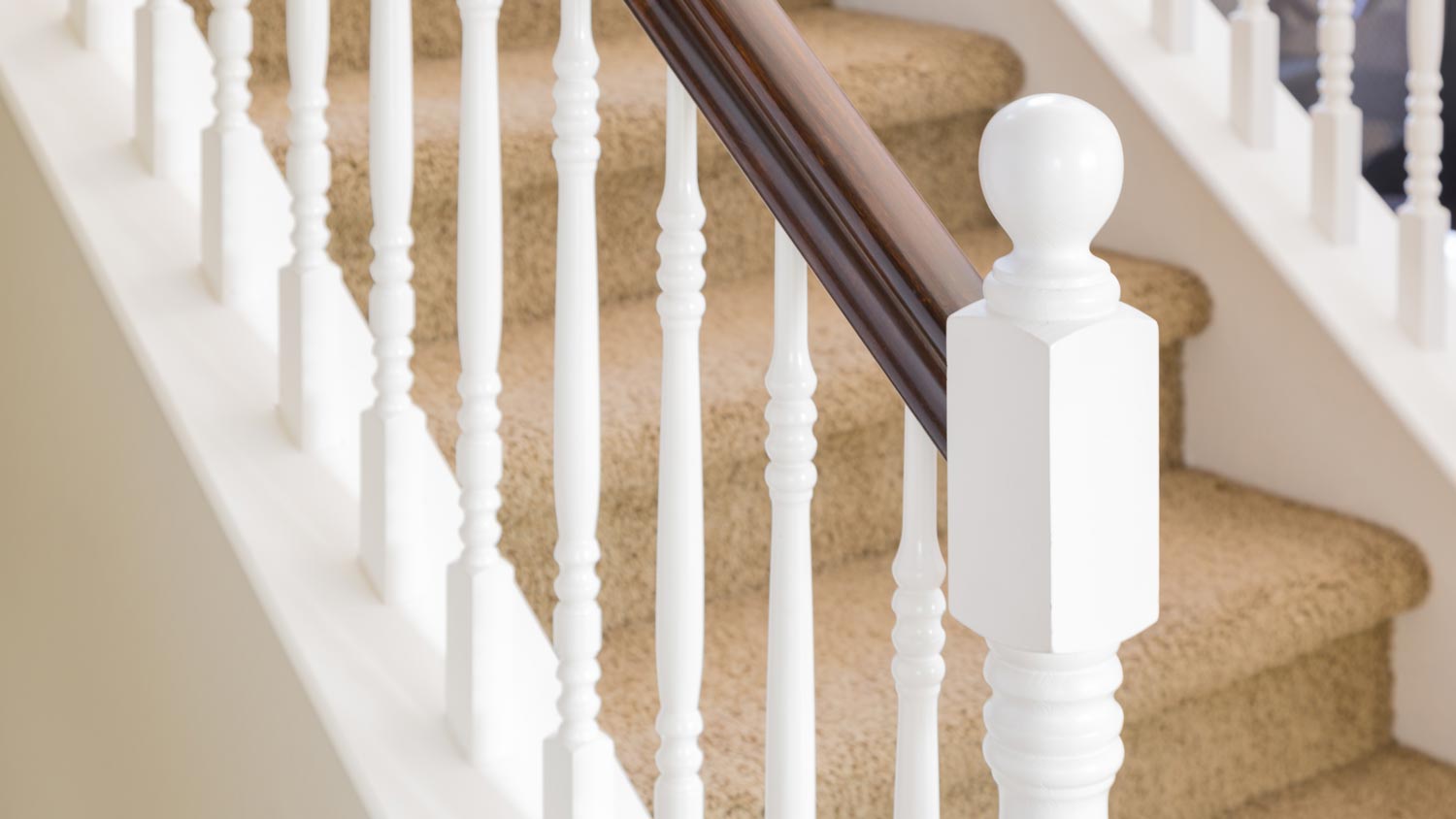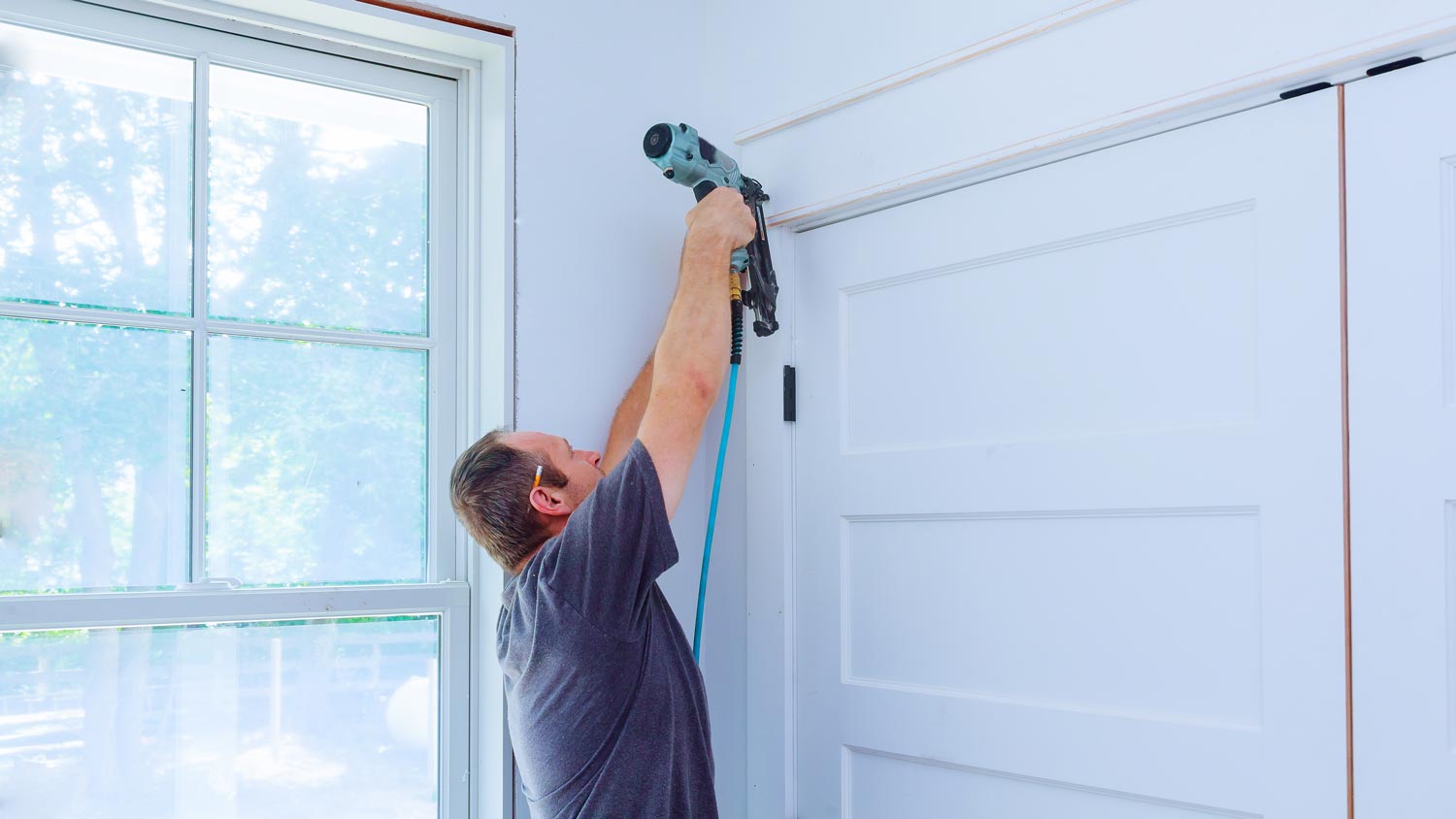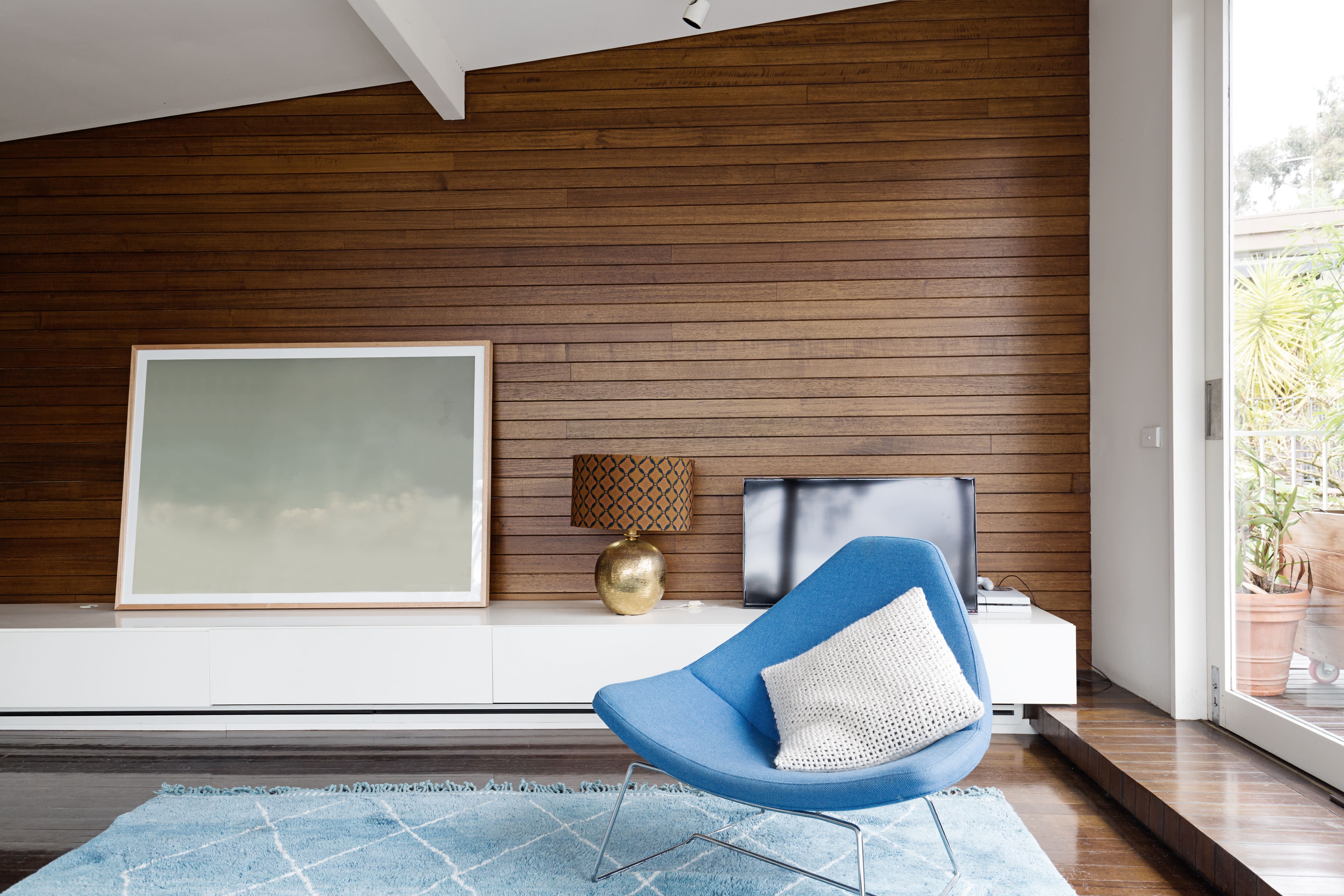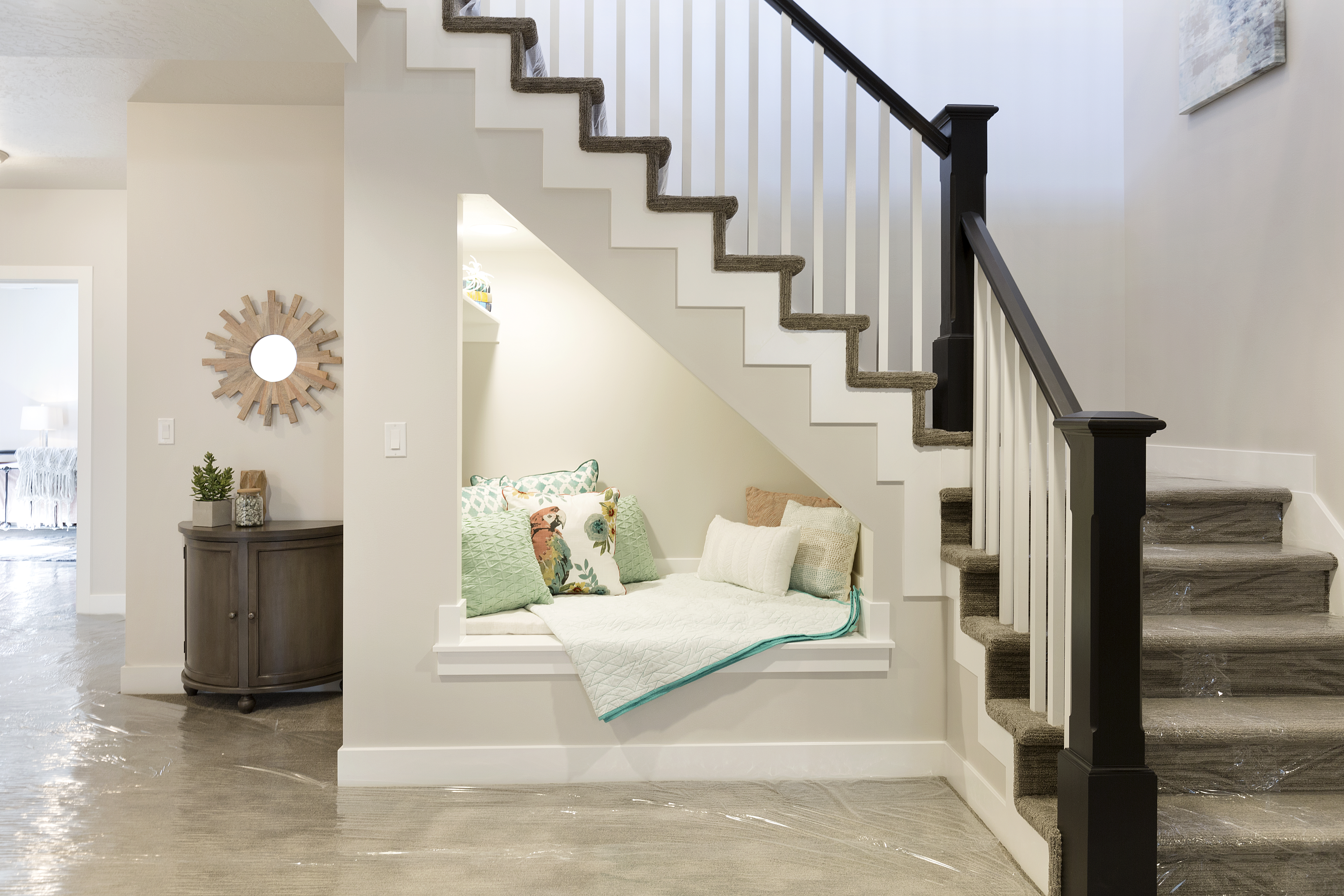
Get expert insights on stair railing repair cost, including average prices, cost factors, and tips to save money. Plan your stair railing repair project with confidence.
The cost to install hardwood stairs averages $2,400, with most homeowners paying between $1,800 and $6,300. Your final price depends on the stair size, type of wood, labor, and any additional features.


Hardwood stair installation enhances both the value and style of a home.
The project cost varies depending on the stair size, wood species, and labor rates.
Custom designs, landings, and railings increase the total price.
Professional installation ensures safety and long-term durability.
Budgeting for add-ons and maintenance helps avoid unexpected expenses.
This article was created using automation technology and thoroughly fact-checked and edited by an Angi Editor in accordance with our AI policy.
The cost to install hardwood stairs ranges from $750 to $30,000, with an average project costing $2,400. Prices depend on the number of steps, wood species, and labor rates. Expect to pay $100 to $300 per stair, including materials and installation. Custom features and complex layouts may increase costs.
Let’s explore the factors that affect the cost of installing hardwood stairs, from size and materials to location and labor, so you can plan your project with confidence and clarity.
The size of your staircase plays a major role in the total cost to install hardwood stairs. The number of steps directly affects material and labor costs, as each additional stair means more wood and more work. Standard staircases often have 12 to 14 steps, but designs with landings or turns may require more. Wider stairs and longer treads also increase expenses due to the need for more materials and additional installation time.
Partial replacements—such as only updating treads or a section of the staircase—cost less than a complete replacement. Extra-wide stairs, landings, or split-level designs add complexity, raising both labor and material costs.
Choosing the right type of hardwood stair installation affects both cost and look. Straight stairs are the most affordable option, while L-shaped, U-shaped, spiral, or curved designs require more labor and precise craftsmanship, thereby increasing expenses. Open risers (spaces between treads) cost more due to safety and code requirements. Prefabricated stairs offer savings, while custom-built stairs fit unique spaces but are more expensive.
Covering existing stairs (retrofit) is less expensive than the cost of a full staircase replacement, but it is not always an option for damaged or outdated structures. Specialty stairs—such as floating or cantilevered designs—come with higher costs due to the engineering and material requirements.
| Stair Type | Cost Impact | Pros | Cons |
|---|---|---|---|
| Straight | Lowest | Simple, fast install | Limited design options |
| L-shaped/U-shaped | Moderate | Visual interest, space-saving | Higher labor/material costs |
| Spiral/curved | Highest | Dramatic look, saves space | Expensive, complex to build |
| Open riser | Higher | Modern style, open feel | Costly, may not meet code |
| Retrofit | Lower | Saves money, less demolition | May not fix structural issues |
| Custom/floating | Highest | Unique design, modern appeal | Requires engineering, costly |
Where you live influences the cost to install hardwood stairs. Urban areas with a higher cost of living often have steeper labor and material rates, while rural regions may offer savings. Local building codes or permit requirements can add to costs, especially in areas with strict regulations or inspection processes. Climate also matters—humid or extreme weather regions may require specialized materials or installation techniques.
The installation location within your home also impacts costs. Main staircases tend to be more accessible and less expensive to install than basement, attic, or exterior stairs. Tight spaces, multi-story homes, or areas with difficult access require more labor and time, which increases the total price. Projects on upper floors or in older homes may also need additional preparation or structural upgrades.
Several important factors influence the total cost to install hardwood stairs. Understanding each helps you plan and prioritize your project.
Material choice is another major factor in the cost to install hardwood stairs:
Oak remains a popular, affordable option.
Maple, cherry, walnut, and exotic woods are more expensive but offer a distinctive look.
Engineered hardwood is less costly and stable in changing climates.
Solid hardwood offers a classic appeal and exceptional longevity.
Pre-finished treads save on labor, while unfinished options allow for custom stains and finishes.
Eco-friendly woods may cost more upfront, but offer sustainability benefits.
| Wood Species/Material | Cost per Step | Pros | Cons |
|---|---|---|---|
| Oak | $100–$200 | Durable, affordable, classic look | Limited color range |
| Maple | $120–$220 | Hard, smooth, modern appearance | Prone to scratches |
| Cherry | $150–$250 | Rich color, ages beautifully | Expensive, softer |
| Walnut | $180–$300 | Luxurious, dark tones | High cost, softer wood |
| Hickory | $140–$250 | Very hard, rustic look | Challenging to stain |
| Engineered hardwood | $90–$170 | Stable, cost-effective | Thin wear layer, less refinishing |
| Eco-friendly options | $120–$300 | Sustainable, varied styles | Higher upfront cost |
Labor is a significant part of your budget when installing hardwood stairs. Carpenters, flooring specialists, or general contractors are often involved, each with their own expertise and rates. Expect to pay $50 to $100 per hour for skilled labor, with minimum service fees for smaller jobs.
Labor cost per step ranges from $40 to $100, depending on the project’s complexity and your region’s rates. More intricate designs, such as curved or multi-landing stairs, require greater skill and time, raising labor costs. Most standard installations take two to five days, but custom work can take longer.
Permits may be required, especially for structural changes or new construction. Building permit fees vary by municipality, ranging from $100 to $500. Some areas require inspections during or after installation, which can increase your total cost. Failing to secure proper permits can result in fines, delays, or even having to redo the work to meet code.
Custom features and add-ons enhance both the function and beauty of hardwood stairs, but they also increase the cost of installation. Each add-on can add $50 to $1,500 or more to your project.
Handrails, balusters, and newel posts—especially those made from premium materials or featuring custom designs—can significantly increase your total. Decorative elements, such as inlays, nosings, or special stains, add visual appeal and increase the cost. Stair runners or anti-slip features improve safety, while lighting or under-stair storage brings convenience and value.
Other factors may impact your final hardwood stair installation price:
Staircase complexity—such as spiral, curved, or multi-landing layouts—requires more materials and labor.
Accessibility and site preparation, such as removing old stairs or hauling materials to upper floors, can increase expenses.
Repairs to subfloors or underlying structures may be needed before installation.
Post-construction cleanup and debris removal are sometimes included, but not always.
Custom projects may require design or architectural fees, and additional inspections for code compliance may be required.
Beyond the basics, there are ongoing and one-time costs worth considering when planning to install hardwood stairs.
Warranties can provide peace of mind. Manufacturers often cover defects in materials, while installers may guarantee workmanship. Standard warranties range from one to five years, with extended coverage available for an extra fee. Improper installation, neglect, or using harsh cleaning products can void warranties, so always follow care guidelines.
Regular care keeps hardwood stairs looking their best. Expect to sweep or vacuum frequently and use a damp mop as needed. Refinishing or resealing every few years helps protect against wear and tear, with professional refinishing costs ranging from $300 to $1,000 for a full staircase. DIY touch-ups and minor repairs can keep costs down, but significant damage may require professional help.
Sales tax on materials and labor varies by state and locality, adding 5% to 10% to your total bill. Some areas also levy local taxes on home improvement projects, so check with your contractor or local tax office.
When you install hardwood stairs, notify your home insurance provider. Most policies cover new stairs, but large changes can affect your premium. During installation, ensure your contractor has liability coverage to protect against accidents or damage.
Some homeowners consider DIY stair installation as a way to save money. DIYers may spend $1,000 to $3,000 on materials and tool rentals, compared to higher costs for professional labor. However, installing hardwood stairs requires advanced carpentry skills, knowledge of building codes, and access to specialized tools and equipment.
DIY projects often take longer—sometimes a week or more—while professionals complete the job efficiently and safely. Mistakes can lead to safety hazards, failed inspections, and higher repair costs. We recommend hiring a local stair installation pro for most hardwood stair installations, especially for complex or structural projects.
Determining whether to repair or replace hardwood stairs depends on the condition of the stairs. Repair may be enough for creaky steps, loose treads, or cosmetic damage, often costing $200 to $1,000.
Full replacement is the better choice when there are structural issues, extensive wear, or safety concerns. If repair costs approach 50% of the replacement cost, replacement is the smarter investment. Consider the age and warranty status of your existing stairs to inform your decision.
Adding hardwood stairs offers a strong return on investment (ROI), enhancing both the home's value and appeal. ROI often ranges from 60% to 80%, especially when using quality materials and classic designs.
New stairs improve safety, support universal design for accessibility, and enhance the overall look of your home. Compared to other upgrades, hardwood stairs are a standout feature for buyers and can set your home apart in the market. Design choices, location, and craftsmanship all influence the value added.
To keep costs down when installing hardwood stairs, consider the following tips:
Choose a budget-friendly wood species or engineered hardwood.
Opt for standard designs over custom or complex layouts.
Remove old stairs or carpeting yourself, if safe to do so.
Get multiple quotes from licensed professionals.
Schedule installation during off-peak seasons for potential discounts.
Limit add-ons and decorative features to essentials.
Maintain stairs regularly to avoid costly repairs.
Home is the most important place on earth, which is why Angi has helped more than 150 million homeowners transform their houses into homes they adore. To help homeowners with their next project, Angi provides readers with the most accurate cost data and upholds strict editorial standards. We extensively research project costs to develop the pricing data you see, so you can make the best decisions for you and your home. We rely on reputable sources, including the U.S. Bureau of Labor Statistics, academic journals, market studies, and interviews with industry experts—all to ensure our prices reflect real-world projects.
Want to help us improve our cost data? Send us a recent project quote to [email protected]. Quotes and personal information will not be shared publicly.
From average costs to expert advice, get all the answers you need to get your job done.

Get expert insights on stair railing repair cost, including average prices, cost factors, and tips to save money. Plan your stair railing repair project with confidence.

Discover the cost of widening a doorway, including average prices, key cost factors, and tips to help you budget for your project.

Whether you need to heat your home for the winter or simply enjoy lighting a fire occasionally, it's helpful to know the cost of a cord of wood in your area.

Discover the cost to install wall paneling. Learn about material, labor, and additional factors that impact your project budget and get tips to save.

While there is a standard staircase size, you have a lot of leeway to size for comfort or space constraints. Learn about average sizes and minimums.

How do you cut crown molding inside corners? The answer requires practice with a coping saw and patience for detailed adjustments that create tight seams.